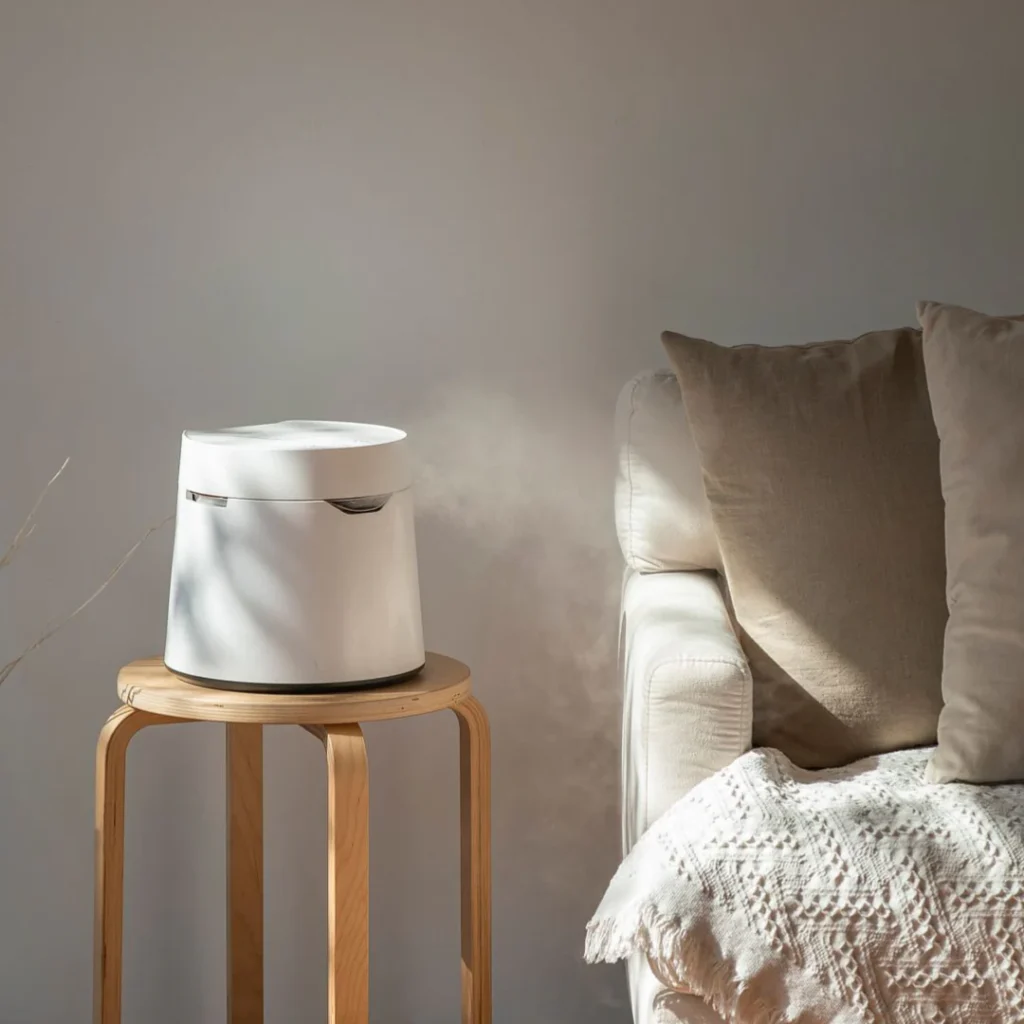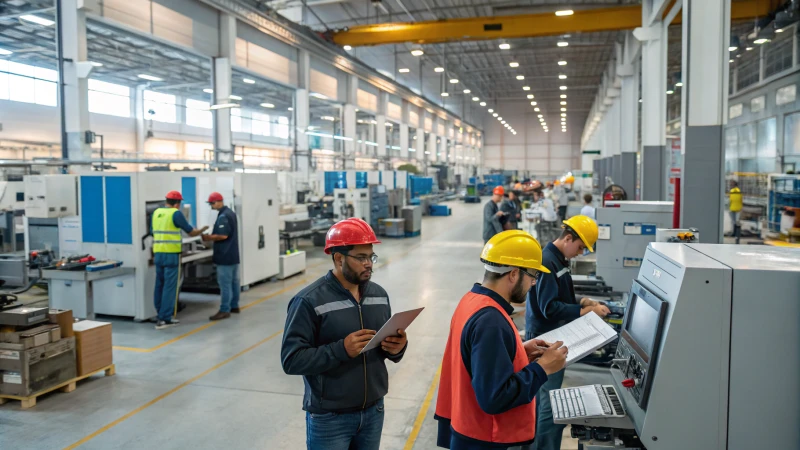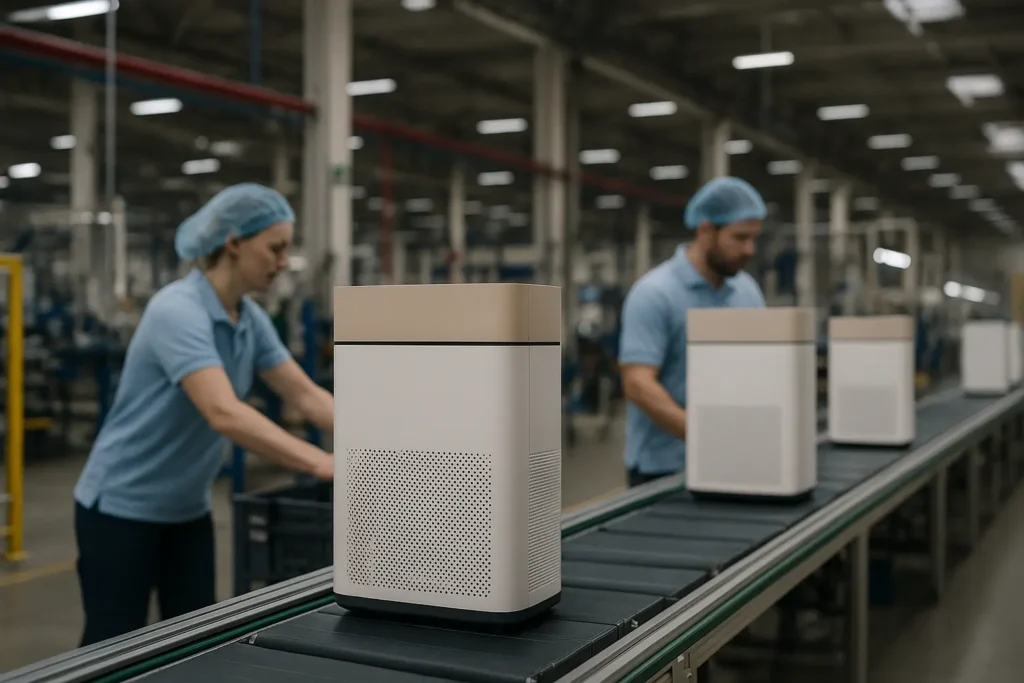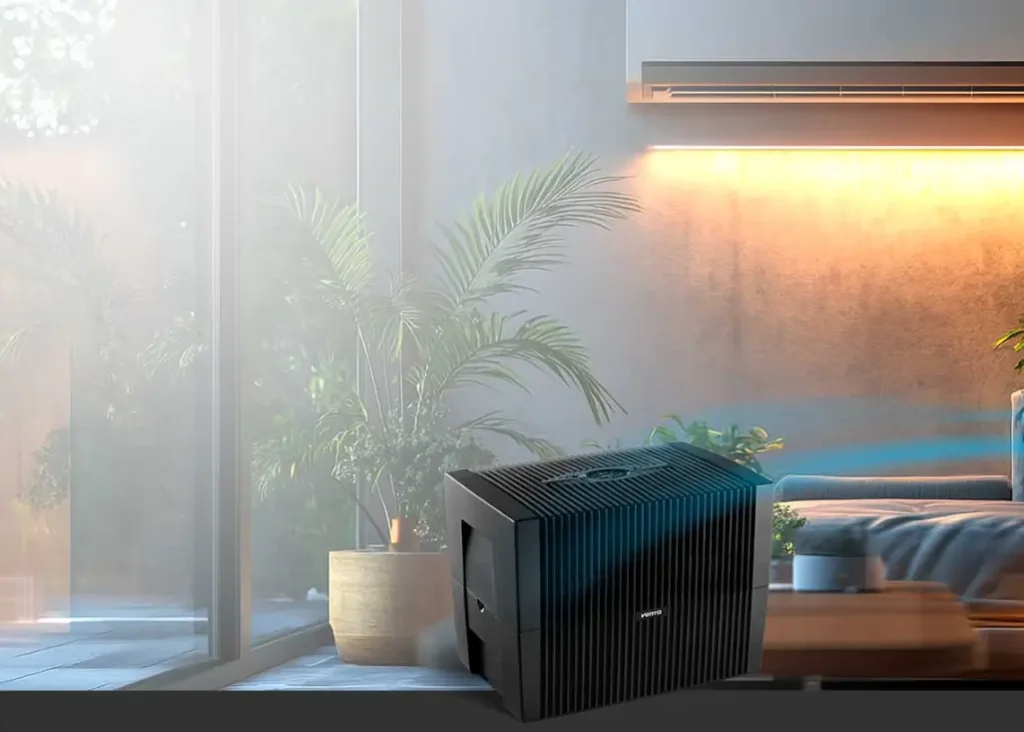El formaldehído es un tipo de compuesto orgánico volátil (COV) que suele estar presente en los espacios residenciales. Por desgracia, su exposición puede ser un poco perjudicial. De ahí que sea necesario aprender a deshacerse de esta sustancia química.
El formaldehído es una sustancia química normalmente incolora pero olorosa. Se utiliza en diversos materiales, cosméticos y productos químicos domésticos. Por ejemplo, puede encontrarse en la madera contrachapada, los adhesivos y el maquillaje. Incluso en aplicaciones comerciales e industriales, el formaldehído también está presente.
Por supuesto, esto indica que el formaldehído tiene muchos usos. Pero, al mismo tiempo, hay que tener cuidado con este producto químico. Los estudios ya han confirmado que esta sustancia en particular puede inducir efectos nocivos para la salud, que discutiremos más adelante .
Además, debe aprender a eliminar el formaldehído en sus espacios vitales, asegurándose de que evitará la exposición. Uno de esos métodos es utilizar purificadores de aire de alta calidad .
¿De dónde procede el formaldehído?
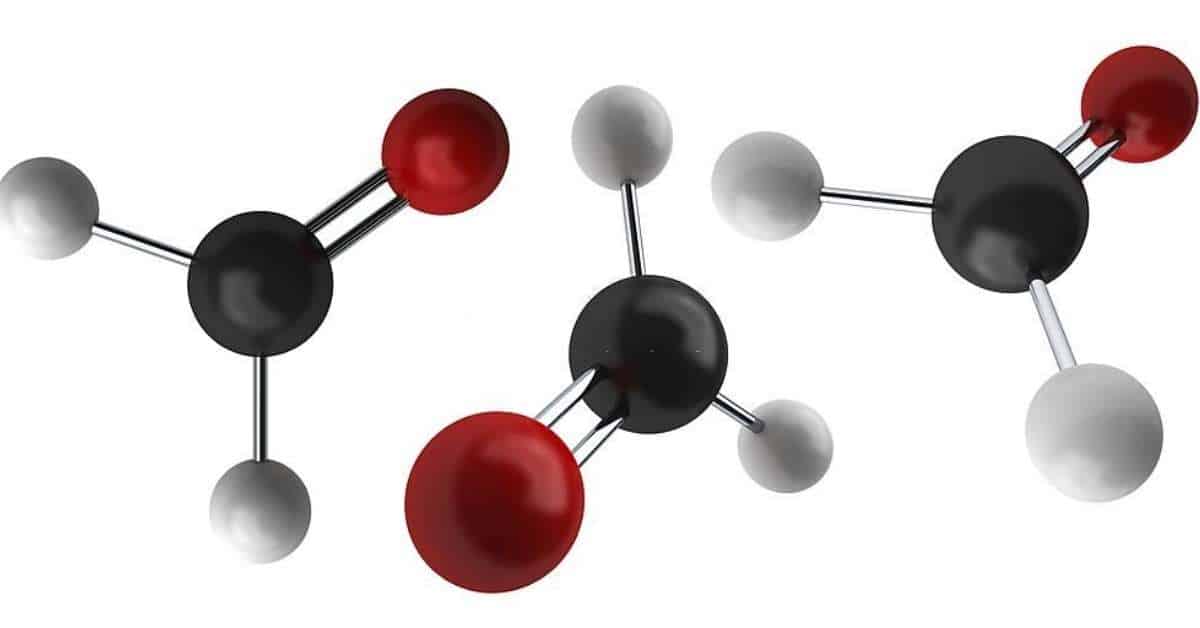
Fuente de la imagen: iStockphoto
El formaldehído es una sustancia química común que se encuentra en ambientes como los aparatos de aire acondicionado, los productos de papel, el humo de los cigarrillos y los salones de manicura. Es un gas incoloro que irrita los ojos, la nariz y la garganta; el olor del formaldehído es una combinación química de ácido fórmico y ácido acético .
El formaldehído es tóxico para las personas y los animales, y la exposición puede provocar síntomas como sequedad e irritación de los ojos, dolor de garganta y piel irritada. En su hogar, el formaldehído procede de las siguientes fuentes:
- Productos de madera prensada, como paneles, tableros de partículas y madera contrachapada
- Aislamiento de espuma
- Pinturas y papel pintado
- Tipos específicos de tejidos, como la prensa permanente
- Tipos específicos de artículos de aseo personal y cosméticos
Asimismo, se afirma que el formaldehído también se genera a través de la combustión. Cuando se quema gas natural, gasolina y queroseno, se produce formaldehído. Por lo tanto, si en su casa hay aparatos que utilizan estos gases, es probable que esté expuesto al formaldehído.
Otra cosa que hay que saber es que esta sustancia es un residuo del tabaco. Por lo tanto, los hogares con fumadores de tabaco también se enfrentan a este problema, sean o no conscientes de ello. De hecho, es muy probable que en su casa haya restos de formaldehído, pero que aún no sea consciente de ello. La presencia invisible de estas sustancias químicas requeriría el servicio de purificadores de aire de fabricantes reputados .
¿Es normal el formaldehído en los hogares?
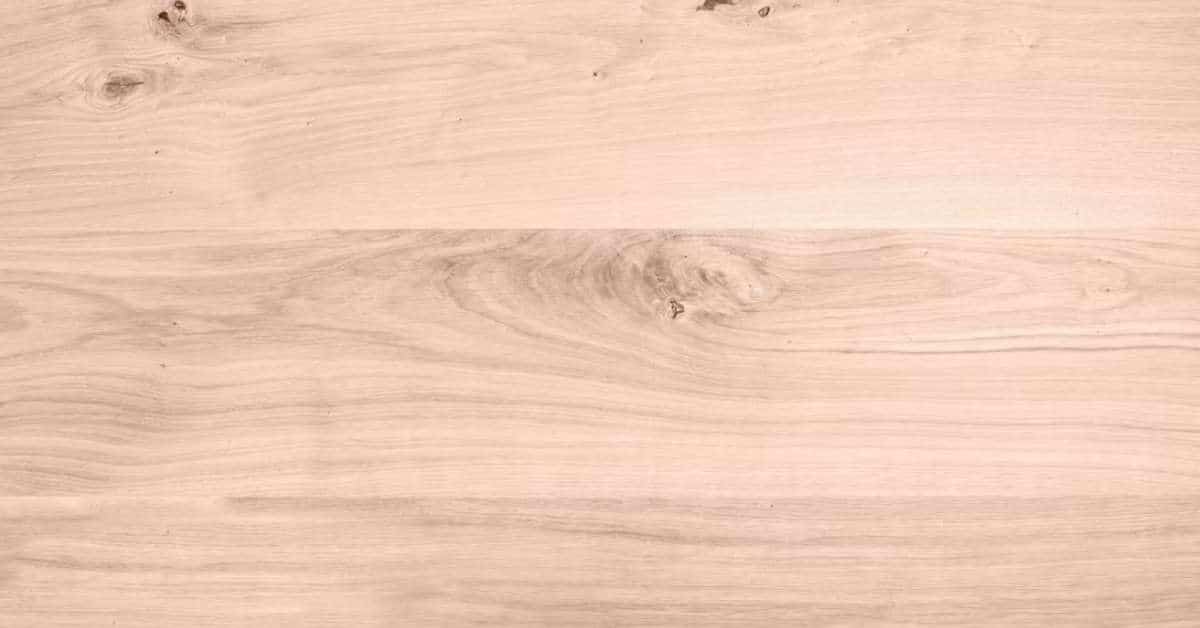
Fuente de la imagen: Unsplash
Como ya se ha mencionado, el formaldehído se encuentra en muchos artículos domésticos comunes, como las alfombras, la ropa de planchado permanente, la espuma de los colchones y las pinturas murales. Pero, ¿significa esto que el formaldehído es algo normal en los hogares?
Según la información publicada por la Comisión de Seguridad de Productos de Consumo de EE.UU., el formaldehído suele estar presente tanto en el aire exterior como en el interior. La buena noticia es que sólo se encuentran en niveles bajos, concretamente inferiores a 0,03 partes por millón.
Sin embargo, se indica claramente que el formaldehído no se produce de forma natural. Esto significa que no está presente en la composición "normal" del aire. Se trata de una sustancia química producida por distintas fuentes, como la combustión de vehículos. Por lo tanto, la presencia de formaldehído en su hogar no debe tratarse a la ligera. En la medida de lo posible, debe abordar este asunto de inmediato.
¿Cuáles son los efectos secundarios de la exposición al formaldehído?
Una vez más, debemos insistir en que la exposición al formaldehído no es algo que deba tomarse a la ligera. El formaldehído es tóxico, por lo que es perjudicial tanto para los seres humanos como para los animales. La exposición prolongada a este producto químico en niveles elevados puede hacer que seas propenso a sufrir diversos daños, como los siguientes:
- Dolores de cabeza
- Náuseas
- Vómitos
- Dificultades respiratorias
- irritación cutánea
Pero se trata sólo de efectos secundarios menores. La exposición a grandes cantidades de formaldehído puede causar tipos de cáncer en humanos . Incluso en animales de laboratorio se ha encontrado el mismo resultado. Ejemplos de estos tipos de cáncer son el cáncer de nasofaringe y el cáncer de senos nasales.
Además, las personas que trabajan en condiciones en las que hay mucho formaldehído, como los embalsamadores y los profesionales hospitalarios, son propensas a desarrollar leucemia.
Estas son algunas de las razones por las que debe evitar a toda costa la exposición al formaldehído.
Fuentes habituales de formaldehído en los hogares

Fuente de la imagen: Unsplash
El formaldehído no es un aspecto natural de su hogar. Por lo tanto, debe conocer las fuentes habituales de esta sustancia química. De este modo, podrá evitar que se produzcan emisiones graves de formaldehído en su casa o edificio.
Éstas son las principales fuentes de formaldehído en los hogares:
Paredes y suelos
El suelo y las paredes de tu espacio pueden ser una fuente rica en formaldehído, sobre todo si llevan adhesivos. Muchas pinturas llevan formaldehído, así que más vale que vigiles el tipo de pintura que vas a utilizar. Es mejor que optes por las que tienen compuestos orgánicos volátiles (COV) bajos o nulos.
Si hay paneles de madera en las paredes de su edificio o casa, es muy probable que haya formaldehído.
Muebles de dormitorio
Muchos tipos de muebles de dormitorio se fabrican con materiales de madera prensada, como tableros de partículas, contrachapados y tableros de fibra. Aunque parecen inofensivos, estos materiales han sido procesados con formaldehído.
Si el mueble dice que es ignífugo, también existe la posibilidad de que contenga formaldehído. Esto es un problema, ya que, a temperatura ambiente, el formaldehído se transforma en gas y se convierte en una emisión.
Productos personales y para el hogar
Muchos productos domésticos y de higiene personal contienen formaldehído. Por ejemplo, el bálsamo, la laca para el pelo y el maquillaje se procesan en entornos donde hay formaldehído. De hecho, existe la posibilidad de que el formaldehído forme parte de sus composiciones.
Mientras permanecen inactivos en sus estanterías o armarios, estos productos podrían liberar formaldehído y otros COV en el aire. Así que asegúrate de que estén bien sellados y de que no estén expuestos a altas temperaturas.
Estufas de gas
Curiosamente, el gas natural es una de las pocas excepciones en las que los fabricantes no son responsables de las emisiones de formaldehído. Al utilizar estufas de gas, el gas natural liberaría automáticamente formaldehído, monóxido de carbono y dióxido de nitrógeno al aire.
Por ello, es crucial que haya una campana extractora en su cocina si alguna vez utiliza cocinas de gas. De este modo, estos residuos serán expulsados de su cocina, evitando que los inhale.
¿Por qué es importante purificar el formaldehído?
Ya hemos mencionado los peligros potenciales del formaldehído para la salud. Por ello, es necesario aprender diferentes métodos para frenar su presencia. En la medida de lo posible, querrá que su hogar esté libre de esta sustancia química.
En las siguientes secciones, presentaremos varios métodos probados y demostrados que son eficaces para eliminar el formaldehído y diferentes tipos de COV en sus espacios vitales.
Purificador de aire para eliminar el formaldehído
Si desea un método infalible para eliminar el formaldehído del aire, entonces tiene que invertir en un purificador de aire. Muchos de ustedes ya han oído hablar de estos purificadores de aire. En esencia, se trata de dispositivos que capturan diferentes contaminantes del aire.
Pero al mismo tiempo, muchos desconocen que estos aparatos no sólo pueden tratar el polen, los alérgenos y los agentes patógenos. También se sabe que los purificadores de aire son eficaces contra las sustancias persistentes, los productos químicos y los contaminantes causantes de olores.
Específico Purificadores de aire con certificación AHAM pueden tratar adecuadamente el formaldehído. Los que tienen los filtros adecuados podrían reducir la presencia de formaldehído en cualquier espacio. En poco tiempo, sabrá cómo los purificadores de aire pueden realizar esta hazaña.
¿Por qué es importante un purificador de aire para mejorar la calidad del aire?
La calidad del aire interior suele verse comprometida por distintos contaminantes. Desde el polvo del exterior hasta el pelo de su mascota, estos elementos pueden reducir gradualmente la respirabilidad general del aire interior.
Por supuesto, existen numerosas formas de mejorar el aire interior contaminado. Podemos enumerar múltiples formas de hacerlo. Sin embargo, si desea un enfoque infalible y sin tonterías, entonces debe optar por utilizar un purificador de aire.
Al fin y al cabo, estos aparatos están diseñados para hacer un solo trabajo, y es eliminar las partículas suspendidas en el aire que podrían causar diversos problemas de salud. Con los purificadores de aire, puede estar seguro de que su hogar tendrá aire fresco y respirable.
Purificador de aire para formaldehído
Los purificadores de aire eliminan las pequeñas partículas de polvo o suciedad del aire, reduciendo las posibilidades de alergias respiratorias y asma. Los purificadores eliminan las partículas mecánicamente forzando el flujo de aire a través de sus filtros.
Uno de sus filtros, llamado filtro de carbón activado o filtro de carbón vegetal, es el responsable de eliminar diversos COV y sustancias químicas del aire. Cuando el aire pasa a través del filtro de carbón, esas sustancias se "rompen", lo que garantiza que no volverán a liberarse en el aire.
Por lo tanto, si su purificador de aire tiene filtros de carbono, su espacio interior estará libre de posibles sustancias químicas nocivas. Es un filtro importante que debe estar presente en un purificador de aire si su problema está relacionado con estas toxinas y sustancias gaseosas.
¿Es seguro el purificador de aire para formaldehído?
Sí. Los purificadores de aire que utilizan filtros suelen ser seguros. Estos aparatos no emiten gases nocivos que puedan desencadenar alergias y enfermedades respiratorias. Estos filtros tampoco contienen sustancias químicas. Pueden capturar contaminantes mediante el proceso estándar de filtración, que ya se ha utilizado durante muchos siglos.
Cuando estos purificadores de aire eliminan el formaldehído, no se libera ningún residuo al aire. Así de "limpios" y "sin fisuras" son estos purificadores de aire.
El único tipo de purificador de aire que debe tener en cuenta es un generador de ozono. Como su nombre indica, un generador de ozono está diseñado para reducir el ozono gaseoso en el aire. Se dice que estos gases de ozono neutralizan los contaminantes del aire. Sin embargo, hay que tener en cuenta que su eficacia no es tan impecable como la de los purificadores de aire basados en filtros. Además, el ozono es un irritante pulmonar que podría dañar su salud.
¿Cómo actúan los purificadores de aire para eliminar el formaldehído?
Como se mencionó anteriormente, los purificadores de aire tienen filtros de carbón activado en ellos. Por supuesto, no hay magia en estos filtros de carbón. Siguen el principio probado y comprobado de la adsorción.
La adsorción es un tipo de reacción química. Las partículas sometidas a este proceso quedan atrapadas en la estructura porosa del filtro. Con el tiempo, estas sustancias se romperían, garantizando que no queden restos en ellas.
Debido a la eficacia de los filtros de carbón, suelen utilizarse en diversas industrias para recoger sustancias químicas y gases transportados por el aire, así como sustancias causantes de olores. Por supuesto, el mismo mecanismo se utiliza también en los purificadores de aire.
Eliminación de Formaldehído mediante Purificadores de Aire: Paso a paso
Así es como los purificadores de aire eliminan el formaldehído y los COV. En general, el proceso es sencillo pero eficaz.
- El purificador de aire atrae el aire hacia él mediante el uso de sus ventiladores.
- Mientras tanto, el aire pasa por varias capas de filtros. Una vez que llega al filtro de carbón, las sustancias químicas quedan atrapadas en la capa porosa del filtro. Aquí es donde se produce la adsorción.
- Después del filtro de carbón, el aire se devuelve a la habitación.
Este proceso se repite hasta que el aire de una habitación determinada ya está libre de diversos contaminantes.
¿Cuánto tarda en asentarse el formaldehído tras su eliminación?
Depende de la gravedad de la emisión de formaldehído en su espacio. Por ejemplo, si la concentración de formaldehído es muy alta, es posible que el purificador de aire tarde un tiempo en eliminarlo.
Pasaría bastante tiempo antes de que los rastros de formaldehído se eliminaran en espacios grandes, especialmente si el purificador de aire que tiene está clasificado para ser eficaz sólo en espacios pequeños. Y eso nos llevaría a nuestra siguiente sección.
Aspectos a tener en cuenta al comprar un purificador de aire para el formaldehído
Usted desea un purificador de aire que proporcione resultados holísticos en la eliminación del formaldehído. Por lo tanto, usted necesita seleccionar el derecho para usted. Estos son algunos de los aspectos importantes que debe tener en cuenta.
- Superficie - Cada purificador de aire tiene su propio rango de eficacia. Por ejemplo, un purificador de aire se clasifica para trabajar en 300 pies cuadrados mientras que otros trabajan en 700 pies cuadrados o más grandes. Lo que debe hacer aquí es encontrar un purificador de aire que tenga un rango efectivo que coincida con los pies cuadrados de la habitación o el espacio que desea purificar. Por ejemplo, si su habitación tiene 500 pies cuadrados, busque un purificador de aire que pueda adaptarse a esa superficie.
- Filtro de carbón activado - Una vez más, tenemos que destacar la importancia de un filtro de carbón activado en la eliminación del formaldehído. Es el único filtro que ha demostrado su eficacia contra sustancias y productos químicos. Filtros HEPA no hará mucho por estos compuestos gaseosos.
Los mejores purificadores de aire para eliminar el formaldehído
Varios purificadores de aire en el mercado hoy en día sobresalen en la eliminación de formaldehído. Estos purificadores de aire son su mejor opción para controlar las emisiones de formaldehído en su hogar. Véalos ahora:
| Cobertura | Tipos de filtros | |
|---|---|---|
| HisoAir Modelo HA139 | 516 pies cuadrados | Filtro HEPA, filtro de carbón activado, prefiltro, luz UVC |
| HisoAir Modelo HA-1601 | 1011 pies cuadrados | Filtro HEPA, filtro de carbón activado, prefiltro, luz UVC |
| HisoAir Modelo HA-1968 | 1.937 pies cuadrados | Filtro HEPA, filtro de carbón activado, prefiltro, luz UVC |
1. HisoAir Modelo HA139
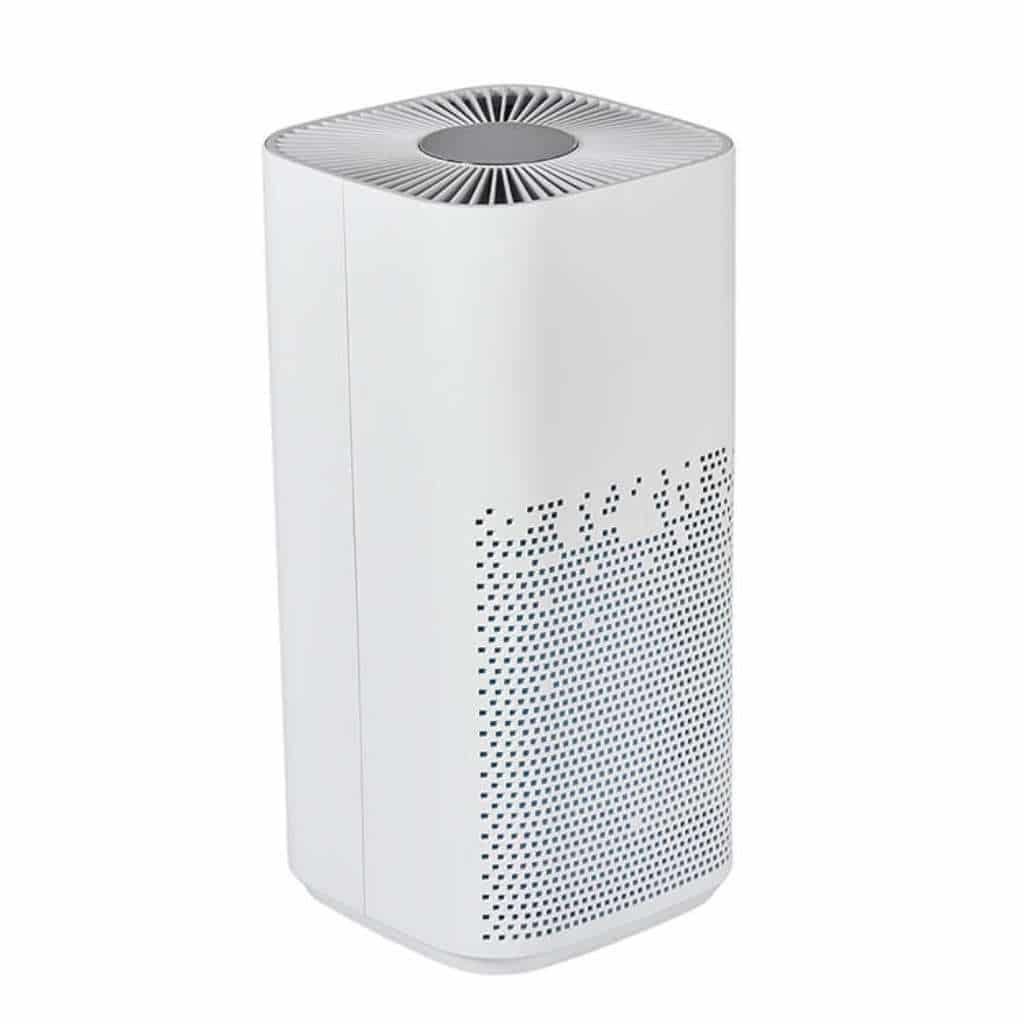
Fuente de la imagen: HisoAir
Tome el purificador de aire modelo HA139 como el estándar para la eliminación de formaldehído. Este purificador de aire cuenta con un filtro de carbón activado de alta calidad que ha demostrado su eficacia contra el formaldehído y otras formas de COV. Con su potente ventilador y flujo de aire, puede aspirar fácilmente las emisiones en su espacio, permitiendo que sean filtradas del aire.
Este mecanismo específico es la razón por la que el modelo HA139 se utiliza habitualmente en aplicaciones comerciales e industriales. Cuando se necesita una amplia eliminación de sustancias químicas en el aire, este dispositivo es bastante fiable. Al mismo tiempo, este purificador de aire también es eficaz contra diferentes contaminantes del aire, gracias a la amplia gama de filtros que incluye.
| PROS | CONS |
|---|---|
| Funcionamiento sencillo y silencioso Eficiencia energética Ofrece una filtración completa del aire |
No se conocen inconvenientes |
2. Purificador de aire HisoAir HA-1601
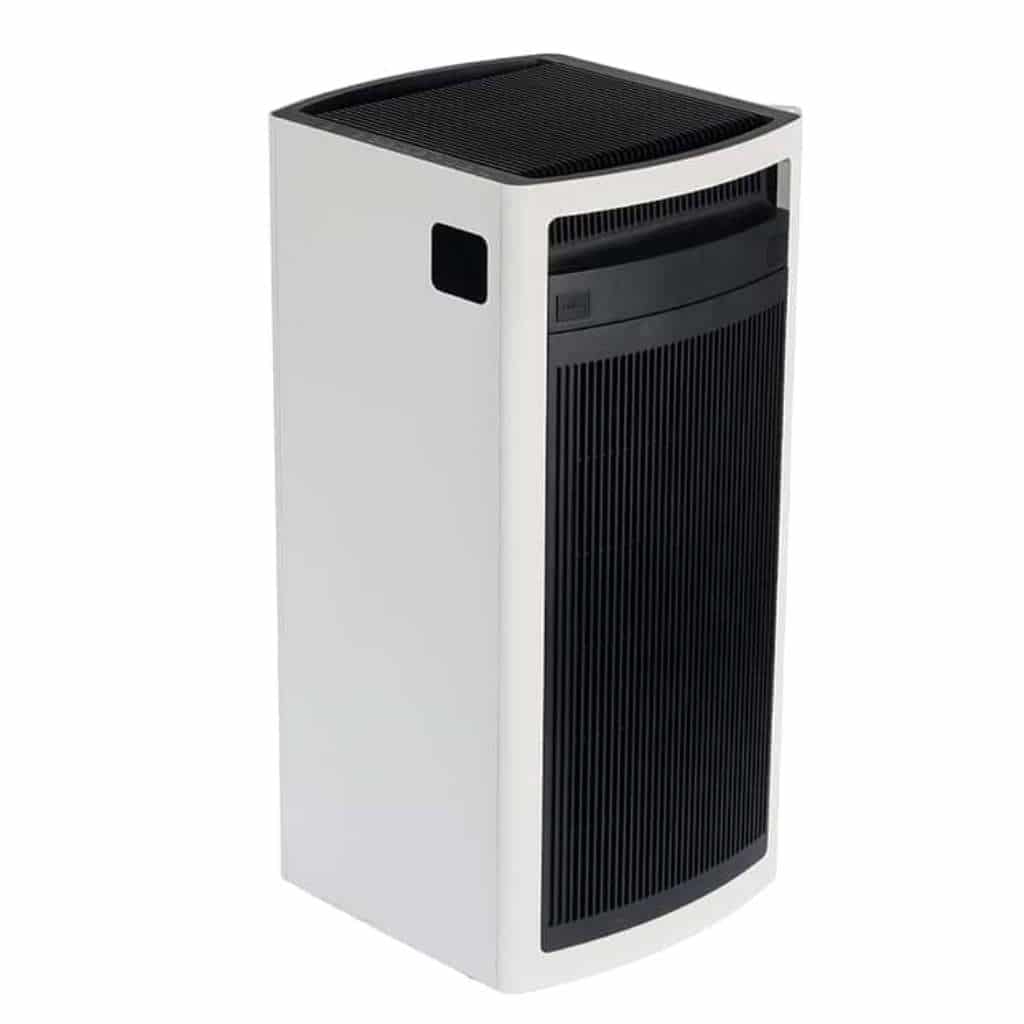
Fuente de la imagen: HisoAir
Otro purificador de aire en el que puede confiar para la eliminación del formaldehído es el purificador de aire HisoAir HA-1601. Este purificador de aire en particular cuenta con una tecnología de filtro HEPA patentada que introduce una tecnología mejorada de captura de bacterias y virus en su sistema de filtración. Como resultado, puede atrapar diferentes tipos de contaminantes en el aire, incluso los más difíciles de detectar.
Su filtro de carbón activo es muy eficaz para eliminar los COV y otras sustancias químicas del aire. No tiene problemas para reducir la presencia de formaldehído, garantizando que su aire interior sea seguro para respirar. También está diseñado para habitaciones grandes, ya que este purificador de aire cubre hasta 1.011 pies cuadrados de espacio. Dado que es un purificador de aire verificado por AHAM, puede garantizar su rendimiento energéticamente eficiente y duradero.
| PROS | CONS |
|
|
3. HisoAir Modelo HA-1968
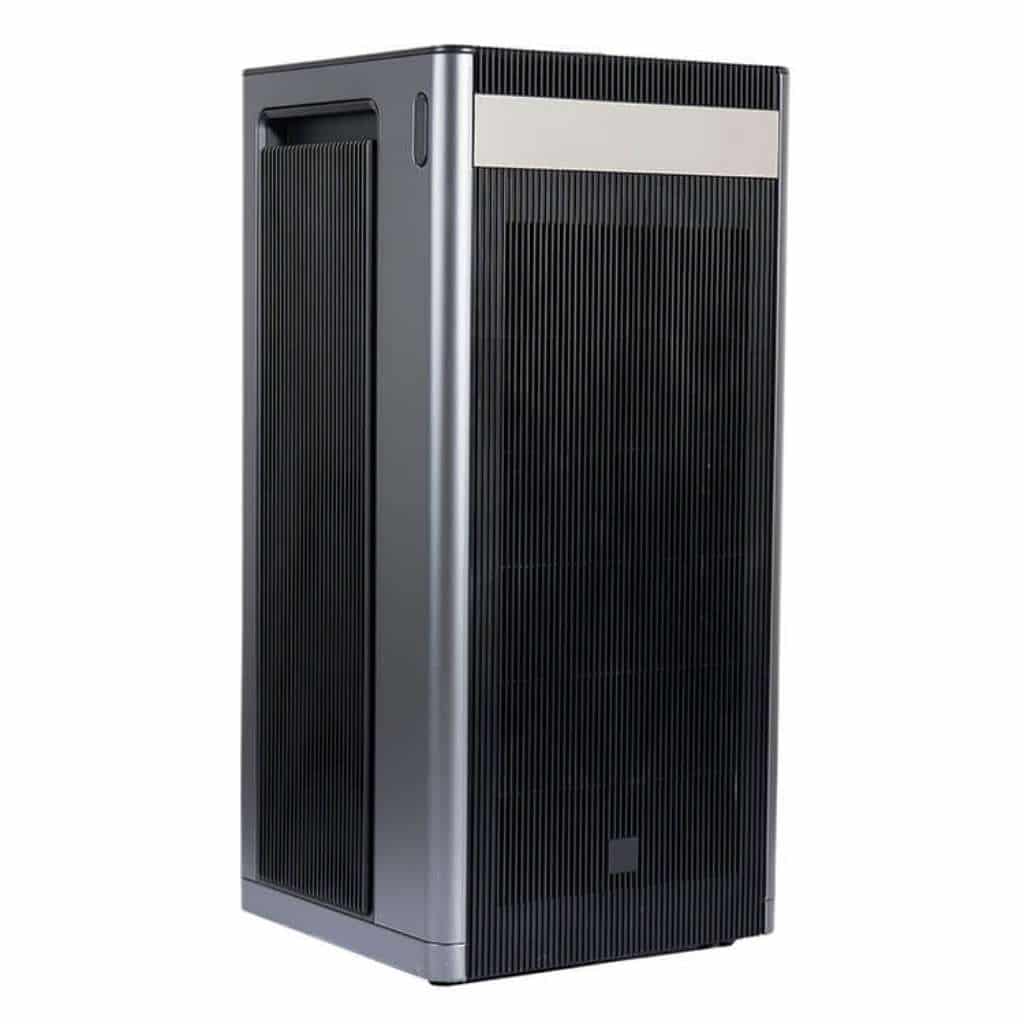
Fuente de la imagen: HisoAir
El purificador de aire Medify MA-50 es un potente eliminador de formaldehído. Ofrece un eficaz sistema de filtración capaz de eliminar diversas sustancias y productos químicos del aire. Su filtro de carbono garantiza la eliminación de los restos de COV, incluido su olor. Gracias a su eficaz rendimiento, este purificador de aire se ha convertido en una opción de confianza para aplicaciones residenciales y comerciales.
Además, el purificador de aire HisoAir modelo HA-1968 es un dispositivo digital, lo que le garantiza un manejo cómodo. Dispone de un panel táctil que le permite configurar sus distintos ajustes. con un sensor de PM2,5 y un sensor opcional de temperatura y humedad para que pueda controlar la calidad del aire de sus espacios interiores.
| PROS | CONS |
|
|
¿Cómo evitar el formaldehído tras la extracción?
Evitar la emisión de formaldehído es bastante complicado, ya que puede tener múltiples fuentes. Pero, al mismo tiempo, la solución a tu problema es asegurarte de que no llevas ningún artículo que contenga formaldehído.
Una forma de conseguirlo es ser exigente con las pinturas y los papeles pintados. Contienen formaldehído, y no dejan de emitirlo aunque ya estén secos. En la medida de lo posible, elige pinturas sin formaldehído.
Si buscas mejoras en madera, busca madera maciza. Evita la madera laminada, ya que contiene mucho formaldehído. Si es la única opción disponible, asegúrate de que cumple con la Normas CARB ATCM . De nuevo, la La clave aquí es asegurarse de no utilizar ningún artículo que contenga formaldehído. De lo contrario, este problema no tendrá fin.
Otras formas de eliminar el formaldehído del aire
Dado que el formaldehído es tóxico, es esencial que pueda reducir su presencia en sus hogares y edificios. Por ello, además de utilizar purificadores de aire, también debería conocer otras medidas para eliminar el formaldehído, como las que se indican a continuación:
Elija bien sus muebles
Lo crea o no, los muebles de su casa pueden convertirse en una excelente fuente de formaldehído. Tenga en cuenta que los armarios y muebles fabricados con materiales prensados, como el MDF y el contrachapado, pueden contener y generar formaldehído.
Según los expertos, la emisión de estas instalaciones domésticas puede disminuir al cabo de diez meses. Pero la amenaza seguiría ahí. Entonces, ¿qué debemos hacer?
Pues bien, si está pensando en comprar muebles nuevos para su casa recién remodelada, puede considerar opciones más seguras. Por ejemplo, los muebles tapizados. Además, debería preferir muebles de madera maciza. Si los artículos de su casa están libres de formaldehído, ¡ya no tiene nada que eliminar!
Abrir una ventana
Otra solución por la que puede optar es abrir las ventanas de su casa. Esto permitiría que el aire circulara, haciendo que el aire del interior escapara. Eso ayudaría a aliviar la presencia de formaldehído en el aire.
Pero tenga cuidado al hacerlo. Intenta limitar el tiempo que abres las ventanas, sobre todo si vives en una ciudad. De lo contrario, también invitarás a otros contaminantes del exterior a entrar e instalarse en tu espacio.
Minimizar la humedad y el calor
Una de las mejores opciones para reducir la presencia de formaldehído en su espacio es regular el calor y la humedad. Según la Agencia de Protección del Medio Ambiente, el calor acelera la liberación de formaldehído en el aire. Si en su casa hay objetos que contienen esta sustancia, las altas temperaturas aceleran su emisión.
Otra cosa que hay que vigilar es la humedad. Cuando la humedad es demasiado alta, puede favorecer la liberación de formaldehído. Afortunadamente, puedes contrarrestar este problema utilizando un deshumidificador.
Colocar plantas que eliminen el formaldehído
Las plantas absorben formaldehído, un irritante que contamina el aire. Sin embargo, algunas plantas pueden absorberlo con más eficacia que otras, así que si te preocupa, quizá te interese cultivar algunas. Algunas plantas comunes que pueden absorber formaldehído son las siguientes:
- Filodendros
- Pothos dorado
- Plantas araña
Quizás quieras explorar otras plantas que son excelente para eliminar toxinas. Si tiene problemas con diferentes tipos de productos químicos, puede que sea necesario llenar su casa de palma areca o palma de dama.
Conclusión
Aquí, es evidente que la exposición al formaldehído y a su olor tiene algunas repercusiones en su olfato. Por lo tanto, es esencial que usted será capaz de eliminar este producto químico de sus espacios de vida para asegurar que su bienestar no se vea comprometida.
Entre las soluciones que enumeramos aquí, el uso de un purificador de aire es la más eficaz cuando se trata de eliminar el olor y los residuos aéreos del formaldehído. Por lo tanto, es necesario que invierta en purificadores de aire de alta calidad de fabricantes reputados, como HisoAir. Visite HisoAir y eche un vistazo a sus diversas ofertas de purificadores de aire.
Consulte otros blogs informativos aquí



